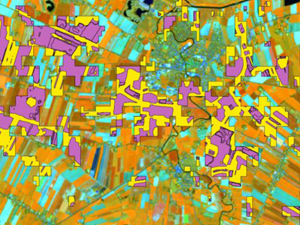
Gromny E., Lewiński S., Rybicki M., Malinowski R., Krupiński M., Nowakowski A., and Jenerowicz M. (2019), Creation of training dataset for Sentinel-2 land cover classification, Proc. SPIE
Supervised classification of satellite images is performed based on utilization of reference training data. Therefore, the availability and quality of reference data highly influences the results and the course of the entire classification process.
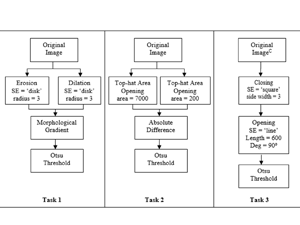
Jenerowicz M., Wawrzaszek A., Krupiński M., Aleksandrowicz S., and Drzewiecki W. (2019), Comparison of mathematical morphology with the local multifractal description applied to the image samples processing, Proc. SPIE
This paper presents the results of a preliminary comparison of two methods which are based on the mathematical approach, Mathematical Morphology and the Local Multifractal Description. Both methods are characterized by the need for
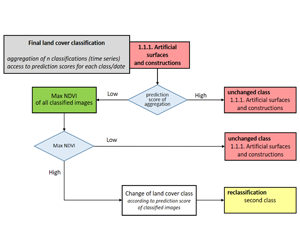
Gromny E., Lewiński S., Rybicki M., Malinowski R., Krupiński M., and Nowakowski A. (2019), Post-processing tools for land cover classification of Sentinel-2, Proc. SPIE
Post-processing is the last and often optional stage of land cover (LC) classification from satellite images. In the traditional approach, it is usually applied to remove the effect of “salt and pepper” from the
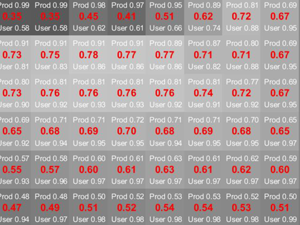
Krupiński M., Lewiński S., Malinowski R. (2019), One class SVM for building detection on Sentinel-2 images, Proc. SPIE
Human population has reached 7.7 billion in year 2019. According to the forecasts of world population projections it may reach 8 billion in 2023. This growth indicates inter alia increased demand for housing. Monitoring
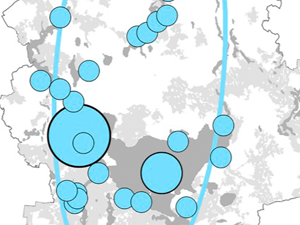
Derek M., Woźniak E., Kulczyk S. (2019), Clustering nature-based tourists by activity. Social, economic and spatial dimensions, Tourism Management
This study develops a typology of tourists visiting a nature-based destination as a function of outdoor activities. It then identifies social, economic and spatial differences between them. A cluster analysis is applied to survey
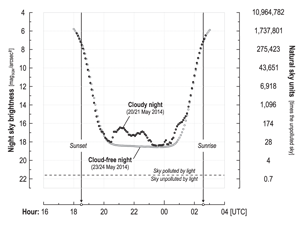
Kotarba A. Z., Chacewicz S., Żmudzka E. (2019), Night sky photometry over Warsaw (Poland) evaluated simultaneously with surface-based and satellite-based cloud observations, Journal of Quantitative Spectroscopy & Radiative Transfer
Light pollution is a widely distributed form of anthropogenic pollution that threatens both biodiversity and human health. One of the most popular indicators is known as night sky brightness (NSB), mea- sured with photometric
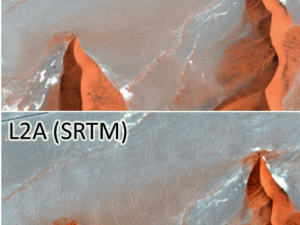
Kukawska E. et al. (2017) Multitemporal Sentinel-2 data – remarks and observations. 9th International Workshop on the Analysis of Multitemporal Remote Sensing Images (MultiTemp), Brugge, 2017, pp. 1-4, doi: 10.1109/Multi-Temp.2017.8035212
All the pre-processing algorithms are being improved constantly. The biggest challenge for the multitemporal analysis is to deal with errors caused directly by the chain of pre-processing of raw Sentinel-2 data to the level
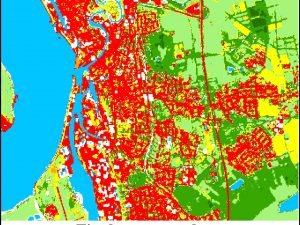
Lewiński S., Nowakowski A., Malinowski R., Rybicki M., Kukawska E., Krupiński M. (2017) Aggregation of Sentinel-2 time series classifications as a solution for multitemporal analysis. In Proc. SPIE 10427, Image and Signal Processing for Remote Sensing XXIII, 104270B doi: 10.1117/12.2277976
The general aim of this work was to elaborate efficient and reliable aggregation method that could be used for creating a land cover map at a global scale from multitemporal satellite imagery. The study
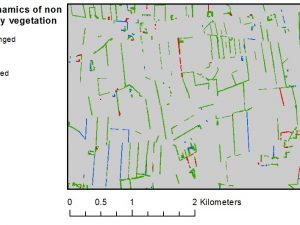
Angelidis I., Levin G., Díaz-Varela R. A., & Malinowski R. (2017) Assessment of changes in formations of non-forest woody vegetation in southern Denmark based on airborne LiDAR. Environmental Monitoring and Assessment, 189(9), 437, doi: 10.1007/s10661-017-6119-8
LiDAR (Light Detection and Ranging) is a remote sensing technology that uses light in the form of pulses to measure the range between a sensor and the Earth’s surface. Recent increase in availability of
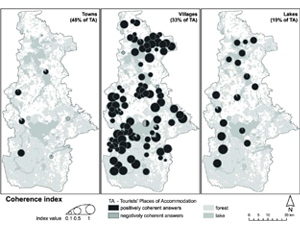
Derek M., Woźniak E., Kulczyk S. (2017) Tourism in a nature-based destination: the human versus the ecological perspectives, Tourism Geographies, 10.1080/14616688.2017.1314545
In the tourism studies literature, wilderness has been addressed from two perspectives. From the first, human, perspective wilderness is a social, subjective construction that exists only in the mind of its users. From the
 English version
English version